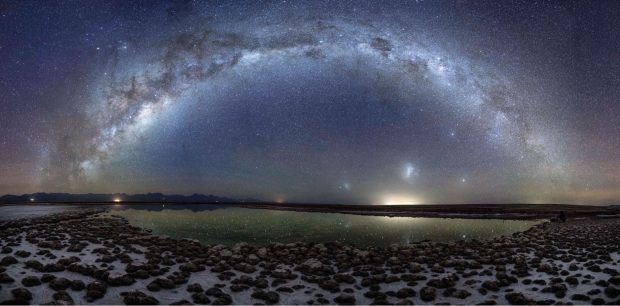Asteroids, satellites and the wonders of the night sky will come to life at an exhibition in Aberdeen next week.
The images form part of the Space for Art exhibition which begins on Saturday at the Aberdeen Science Centre.
The event has been organised in collaboration with researchers at the University of Strathclyde’s Space Institute and the Strathclyde-led Stardust project.
This seeks solutions to the threats posed by asteroids and space debris and the exhibition uses art to explore real research projects taking place in the university’s laboratories, ranging from spacecraft being built on the Clyde, to asteroid deflection.
Project leader Peter McGinty, of Strathclyde’s Faculty of Engineering, said: “Our research at Strathclyde Space Institute has the goal of protecting the Earth’s long-term future.
“The technology and its applications are extremely useful, but can also be very beautiful, so we teamed up with Glasgow School of Art to help capture the impact of this work.
“Science fiction is rapidly becoming ‘science fact’ and researchers in the UK’s growing space industry are delivering exceptional achievements in asteroid deflection, space debris capture and delivering the spacecraft of the future.
“Our exhibition features striking images which depict research with real impact.”
Twelve researchers have taken part in the venture, run in collaboration with Glasgow School of Art and Glasgow Science Centre and funded by Ingenious, the Royal Academy of Engineering’s public engagement grant scheme.
